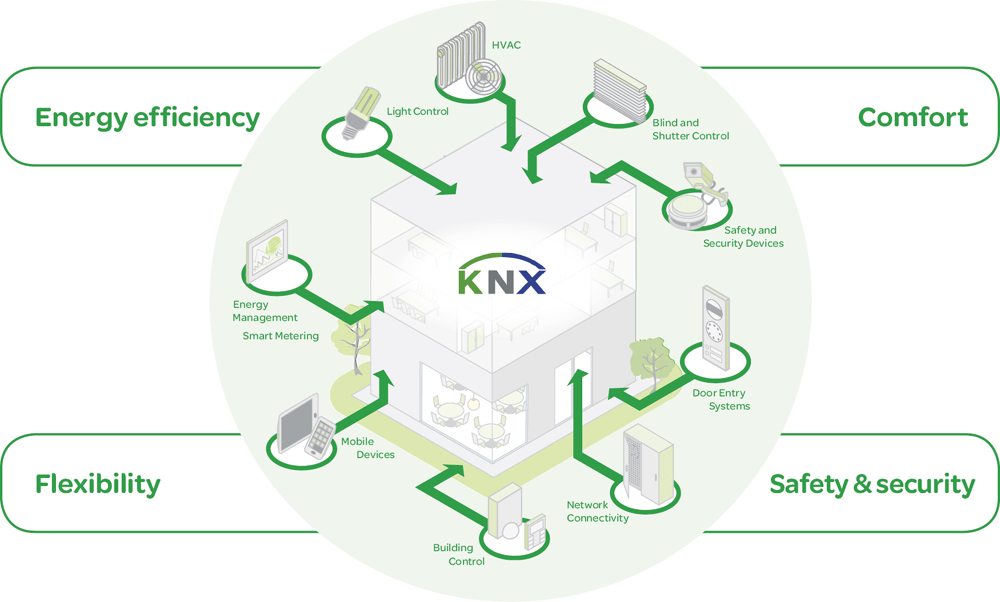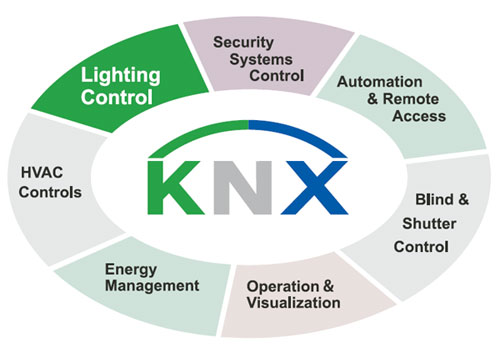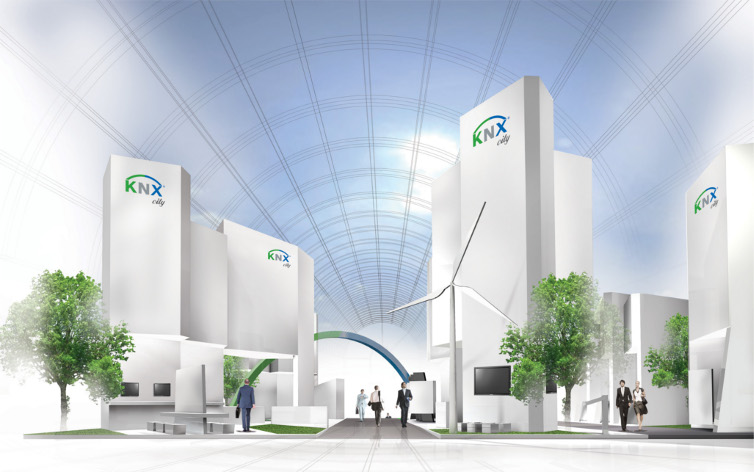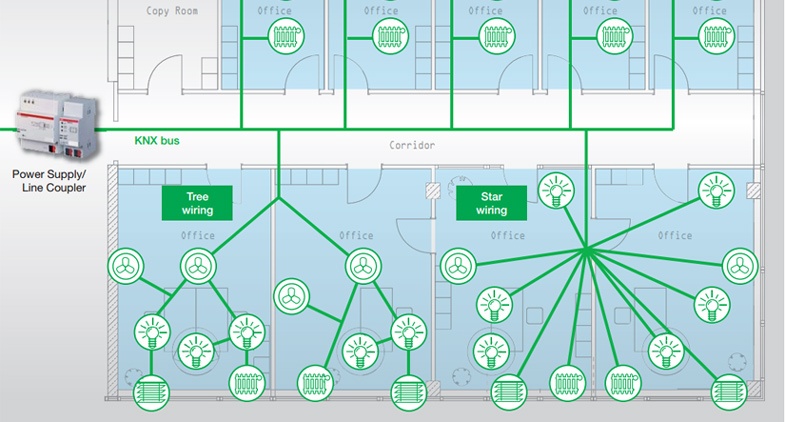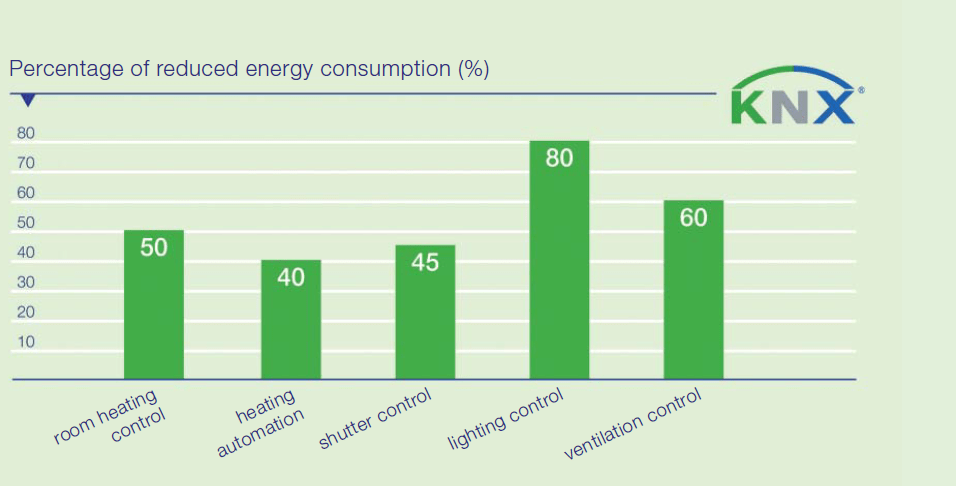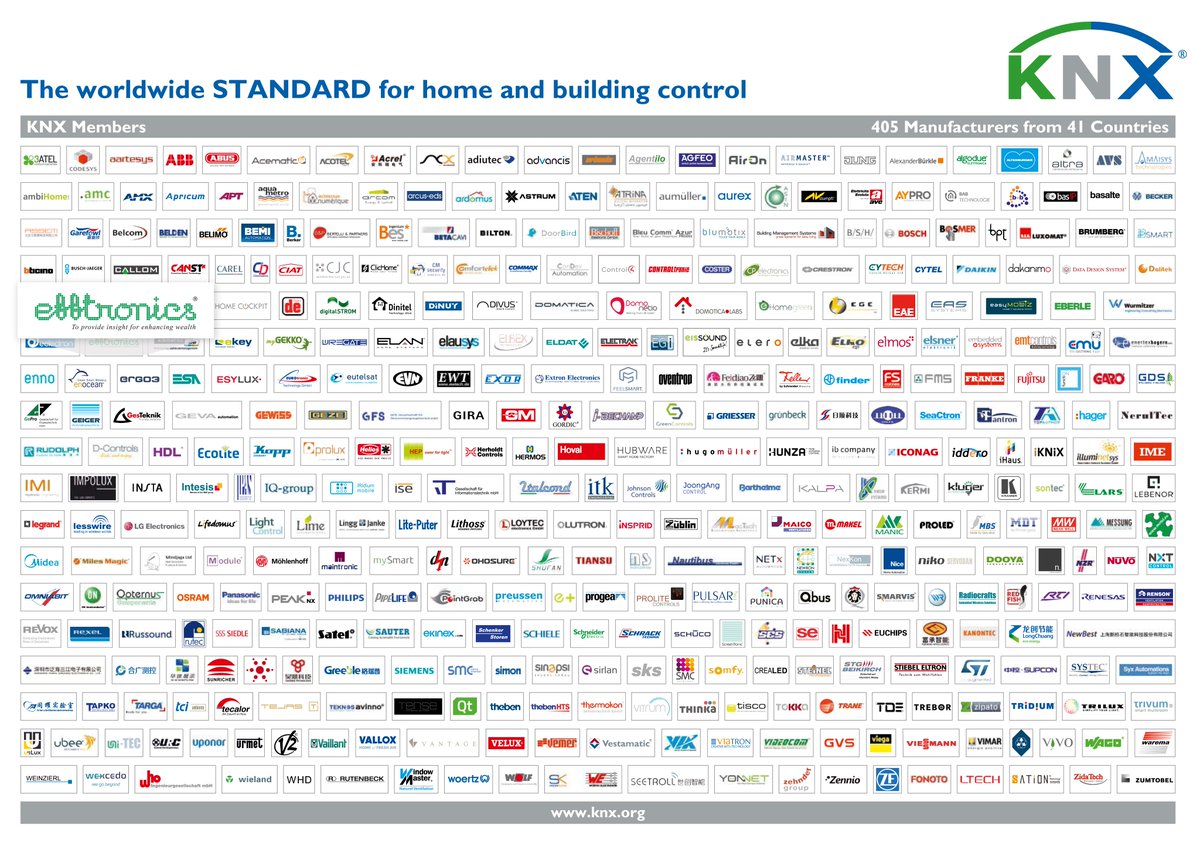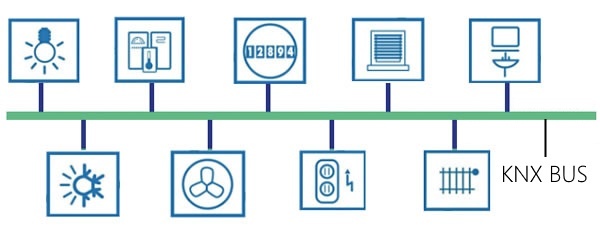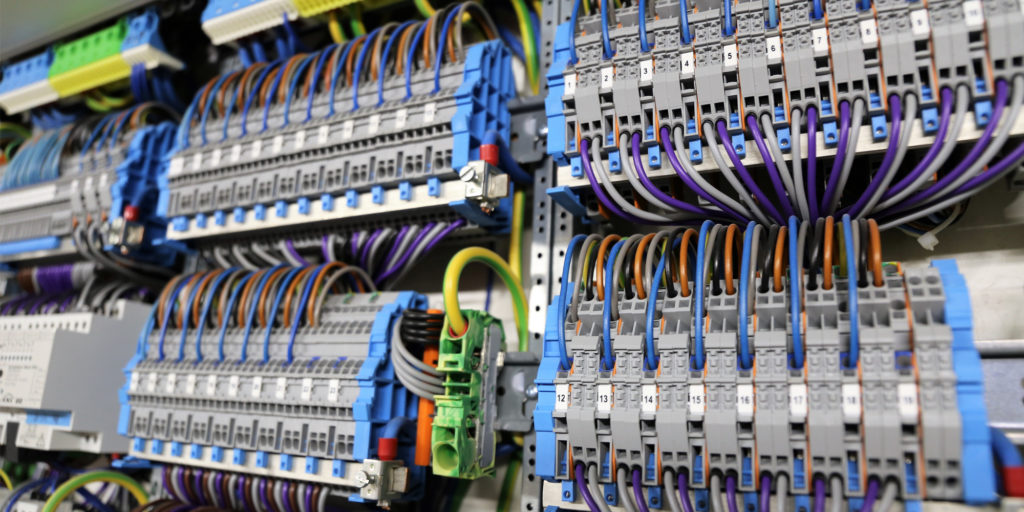In this article we will outline the key benefits of KNX automation for commercial and industrial building projects. We will also explain how KNX technology works to improve building operational efficiency, lower energy consumption/costs and optimize the living/working conditions of all building occupants.
KNX Manages Energy Consumption and Improves Building Operational Efficiency
In light of climate change and public awareness, the energy-efficiency of building operations is now an extremely important factor during any building planning stages.
There are now essential requirements for to construct buildings with energy-efficient architectural design, an insulated exterior and modern electrical engineering which maintains a high level of operational efficiency.
The consumption of energy for integral building operations such as lighting, heating, cooling etc. depend on both the overall building design and end-user/occupant behavior.
With a dynamic KNX operational system, energy usage of any commercial or industrial building can be fully optimized to match energy demand during different times of operation.
Building automation with KNX offers the best option for building automation as it ensures economical use of energy, while still maintaining optimal performance of all building features and functions.
KNX systems are able to regulate and control the generated heating and cooling capacity in line with demand — and also manage lighting installations using sensors and timer programs (so they are operate more efficiently).
KNX installations and planning can be used to effectively control such things as sun protection systems, ventilation flaps and other systems where energy and cost saving benefits can be maximized.
Intelligent capture of consumption data (Smart Metering) as well as coupling with other intelligent networks (Smart Grid) opens up new possibilities for further optimization and increased energy efficiency for the future.
KNX Improves Business Operational Efficiency
All businesses aspire to maximize efficiency in daily operations.
Business operational efficiency has a lot to do with managing the resources of the entire facility (e.g. staff work-flows, electricity, time, money, etc.) in a way that reduces waste and maximizes output.
KNX automation systems in commercial or industrial buildings can connect a multitude of devices inside the same facility to exchange information that allows for maximum workplace efficiency.
An industrial site or a business complex is often quite large, therefore KNX makes a huge difference when it comes to bringing together every room, every employee and the automated operations of integral building functions.
KNX is Convenient and Reliable
KNX automation can manage everything: security, lighting, heating, energy efficiency, sensors, dimmers, valves, blinds, shutters, audio, video, displays and so much more.
KNX is a smart-building system which not only controls building features and functions, it also makes it far easier for employees (or building occupants) to achieve optimal performance on a daily basis.
KNX is a reliable, fully customizable system that improves both building operational efficiency and workplace comfort/convenience — all manageable from a smart phone, tablet or laptop.
KNX Energy Management Provides Huge Cost Saving Benefits
KNX automation doesn’t just save time, it can also provide huge financial savings for any business through efficient energy management, usage and consumption.
KNX systems provide effective energy management through Peak Demand Monitoring, Current Detection, Network Monitoring, Load Shedding, Smart Metering, Energy Pulse Counting, Data Logging and Visualisation
KNX systems for commercial and industrial buildings also reduce the costs required for the installation and maintenance of such things such as traditional switches, wiring, banners and other things — which when purchased and used manually, can amount to substantial financial burdens for the business.
In the event of lights, HVAC and other building mechanisms failing and requiring manual labour to be fixed, this only adds to the costs.
When everything is controlled by KNX automation, all of these maintenance costs are totally removed and only arise when the time comes to completely replace all lights, heaters, air conditioners, etc.
So for commercial and industrial businesses, KNX automation can be extremely beneficial in terms of energy management and energy costs.
KNX is Future-Proof Technology
For a system to be futureproof, it is surely a given that it is built on a ubiquitous and harmonised platform that assures there will be continuity of supply. The end user – and indeed integrators charged with maintaining the system – cannot be hostage to the commercial whims of one supplier. It follows that proprietary systems – even when they are thinly disguised as ‘standards’ – are not futureproof.
With KNX, there is an assurance that will no happen. Manufacturers of KNX compatible devices, and there are over 400 of them, are attracted by the global marketplace the open communications protocol creates. In return, they must ensure that every KNX product they submit for certification is backwards compatible.
Most of the quasi-standards can be integrated into a KNX system and how we do tha is often the topic of conversation between integrators at KNX UK Association networking days, where the collaborative ethos that has always driven KNX is evident.
KNX Systems are Flexible, Robust and Simplistic in Design
Changes and upgrades to installations must be simple. We live in an age where customers expect ‘plug and play’, not ‘rip and replace’. The KNX approach of distributing intelligence and addressing field level devices via robust, inexpensive TP cable makes sense.
So while, say, DALI offers on the face of it a good degree of flexibility at the control panel end, significant changes to the lighting schematic are likely to involve costly and disruptive building and remedial work.
With a KNX system where you can just drop down from the nearest node on a bus cable. In practice, a popular solution is to couple DALI lighting zones within a building-wide KNX system using readily-available and KNX-certified gateway devices.
KNX Systems Can Be Easily Scaled and Upgraded as Needed
At 9600bps, the bus can support over 50 telegrams (instructions to field level devices or feedback from them) per second which is more than sufficient because intelligence is distributed on a KNX network.
A KNX installation is further divided into lines and areas, each independent from any others and each with its own capacity of 50 telegrams per second. It is clear that cable bandwidth is not an issue.
While cable remains the backbone of most KNX systems there is, of course, a secure IP connectivity.
This all leads to the inevitable conclusion that KNX is unquestionably the best solution for futureproofing intelligent buildings control.
The customer has a building that will keep working for them; the integrator has a customer that will keep coming back for more because the price and hassle barriers of continuous improvement are, relatively speaking, negligible.
The key promises implicit in a KNX system are that:
all the devices they install will work together as intended,
any one device can be replaced or upgraded, without compromising the whole system,
expanding and reconfiguring the systems to accommodate the need to change the way a building is laid out and used will always be possible
any new KNX software developments will be backwards compatible – a device that was addressed by the KNX configuration software (ETS) in, say 2000, can be managed just as easily with, say a 2025 software version and beyond.
KNX is internationally recognized as the worldwide STANDARD for all applications in smart home automation and building control — including lighting, blinds & shutters, security systems, heating, ventilation, air conditioning, monitoring, alarms, water control, energy management, smart metering, household appliances, audio/video and more.

